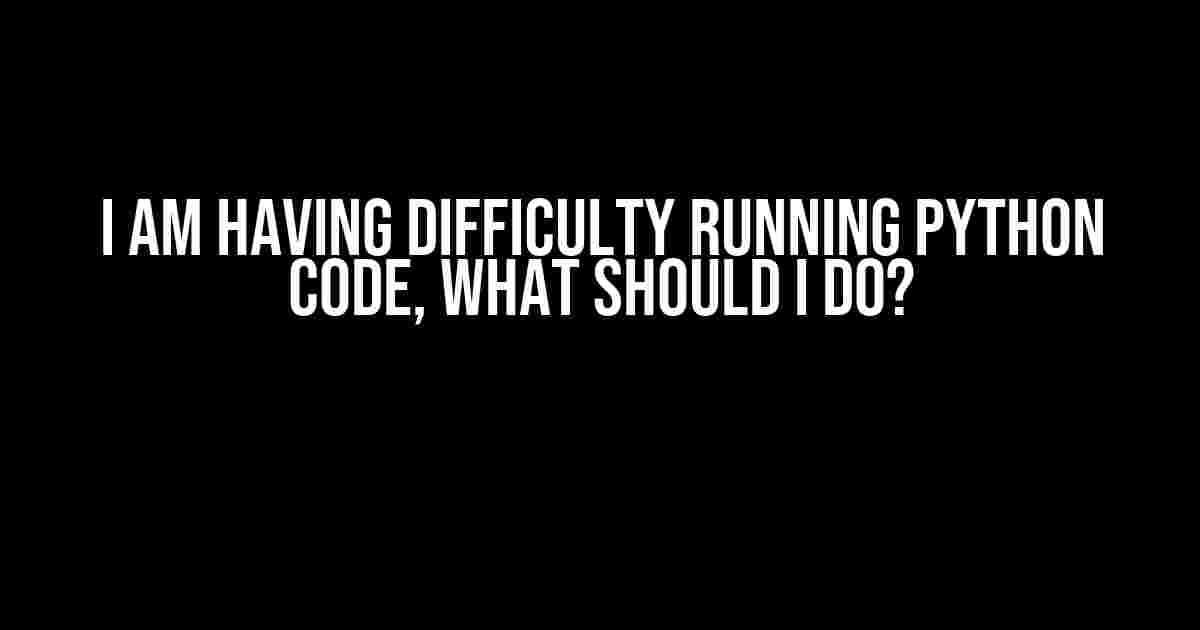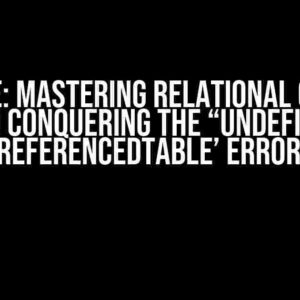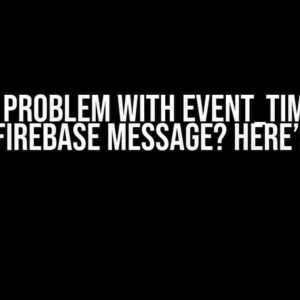Are you stuck in a rut, staring at a sea of Python code that just won’t budge? Don’t worry, friend, you’re not alone! Running Python code can be a daunting task, especially for beginners. But fear not, for we’ve got your back! In this article, we’ll take you by the hand and guide you through the most common issues that might be causing your Python code to malfunction. So, grab a cup of coffee, sit back, and let’s dive in!
Step 1: Check Your Python Installation
The first and most crucial step is to ensure that Python is installed correctly on your system. You might be thinking, “But I’ve already installed Python, why is it not working?!” Hold up, let’s take a step back and verify that Python is installed correctly.
Here are a few things to check:
- Open a terminal or command prompt and type
python --version. This should display the version of Python installed on your system. - Make sure you have the correct version of Python installed. If you’re using an older version, you might want to upgrade to the latest version.
- Check if Python is added to your system’s PATH. This will allow you to run Python scripts from anywhere.
Step 2: Review Your Code
Now that we’ve verified Python is installed correctly, let’s take a closer look at your code. It’s easy to overlook a small typo or syntax error, but these can cause your code to fail miserably.
Here are some common mistakes to watch out for:
- Indentation errors: Python uses indentation to define block-level structure. Make sure your indentation is consistent and correct.
- Syntax errors: Check for missing or mismatched brackets, parentheses, and quotes.
- Typo errors: A single typo can cause your code to fail. Review your code line by line to catch any typos.
Step 3: Check Your Environment
Sometimes, issues can arise from the environment in which you’re running your Python code. Let’s investigate:
Here are some environment-related things to check:
- Working directory: Make sure you’re running your script from the correct directory.
- Dependency issues: Are you using any external libraries or dependencies? Ensure they’re installed correctly.
- File encoding: If you’re working with file I/O, ensure the file is encoded correctly.
# Example of checking the working directory
import os
print(os.getcwd())
Step 4: Debug Your Code
Debugging is an essential part of the coding process. It’s like being a detective, searching for clues to solve the mystery of the malfunctioning code.
Here are some debugging techniques to try:
- Use the
print()function to output variables and check their values. - Employ a Python debugger like
pdborPyCharm's built-in debugger. - Check for any error messages or warnings. These can give you a hint about what’s going wrong.
# Example of using print() to debug
x = 5
y = 0
try:
result = x / y
print("Result:", result)
except ZeroDivisionError:
print("Error: Division by zero!")
Step 5: Seek Help
If you’ve checked everything and still can’t get your code to work, don’t be afraid to ask for help!
Here are some resources to seek help:
- Stack Overflow: A Q&A platform for programmers.
- Python documentation: The official Python documentation is an exhaustive resource.
- Online communities: Join online communities like Reddit’s r/learnpython or r/Python.
- Tutoring or coding bootcamps: Consider seeking guidance from experienced programmers.
| Resource | Description |
|---|---|
| Stack Overflow | A Q&A platform for programmers. |
| Python documentation | The official Python documentation is an exhaustive resource. |
| Online communities | Join online communities like Reddit’s r/learnpython or r/Python. |
| Tutoring or coding bootcamps | Consider seeking guidance from experienced programmers. |
Conclusion
We’ve walked you through the most common issues that might be causing your Python code to malfunction. Remember, debugging is a process, and it takes time and patience to identify and fix the problem. Don’t be discouraged if your code doesn’t work at first – it’s all part of the learning journey!
By following these steps, you’ll be well on your way to becoming a Python pro. And if all else fails, don’t hesitate to seek help from the resources listed above.
So, go ahead, take a deep breath, and dive back into your Python code. You got this!
Happy coding!
Frequently Asked Question
Having trouble running Python code? Don’t worry, we’ve all been there! Here are some common solutions to get you back on track:
Q: I’m getting a syntax error, what’s wrong with my code?
A: Ah, syntax errors can be frustrating! Check for typos, missing brackets, or incorrect indentation. Python is infamous for being picky about whitespace, so make sure your indentation is consistent. Try re-reading your code, or use an IDE with syntax highlighting to spot the mistake.
Q: I’ve installed Python, but my code still won’t run. What’s going on?
A: Bummer! First, ensure you’ve installed Python correctly and added it to your system’s PATH. Then, try running your code using the command `python your_file.py` in your terminal or command prompt. If that doesn’t work, check if your file is in the correct directory and has a `.py` extension.
Q: My code is running, but it’s not doing what I expect. How do I debug it?
A: Debugging can be a challenge! Try adding `print()` statements throughout your code to see what’s happening at each step. This will help you identify where things are going wrong. You can also use tools like the built-in `pdb` module or a visual debugger like PyCharm to step through your code and inspect variables.
Q: I’ve copied code from a tutorial, but it’s still not working. What’s the problem?
A: Frustrating, isn’t it? Check that you’ve copied the code correctly, and that you’re using the same version of Python and any required libraries as the tutorial. Also, make sure you’re running the code in the correct environment (e.g., Jupyter notebook, IDLE, or a regular Python script).
Q: I’ve tried everything, but my code still won’t run. What’s my next step?
A: Don’t give up! Reach out to online communities like Stack Overflow, Reddit’s r/learnpython, or Python forums for help. Provide as much detail as possible about your code, error messages, and what you’ve tried so far. Chances are, someone has encountered a similar issue and can offer guidance.





